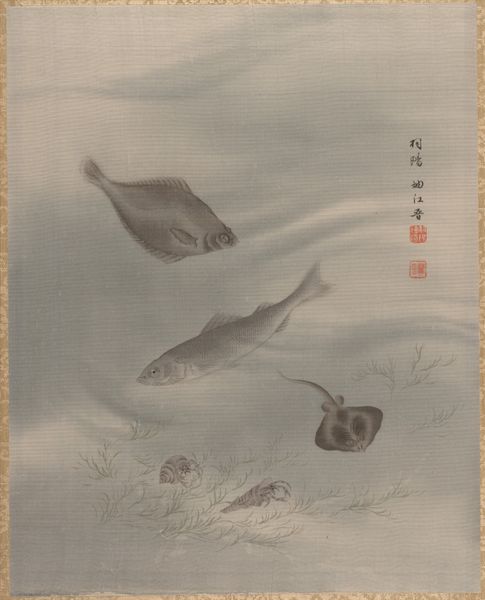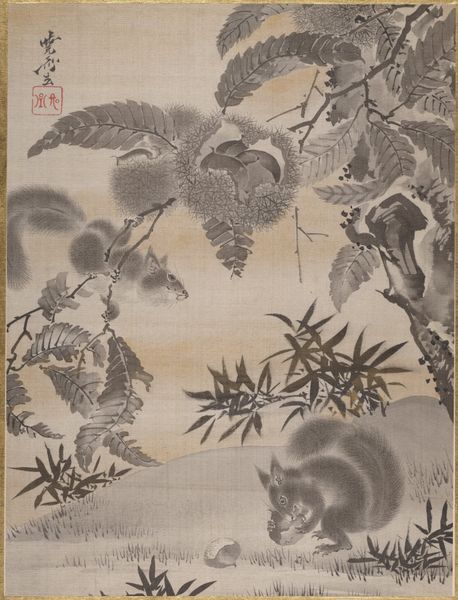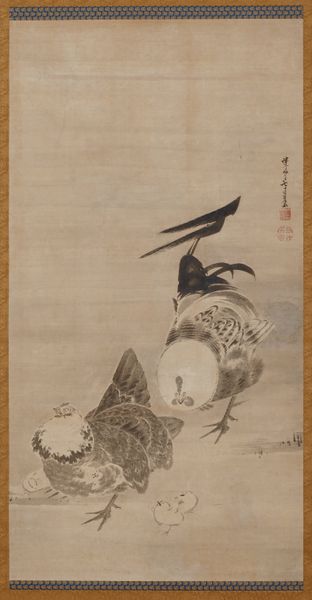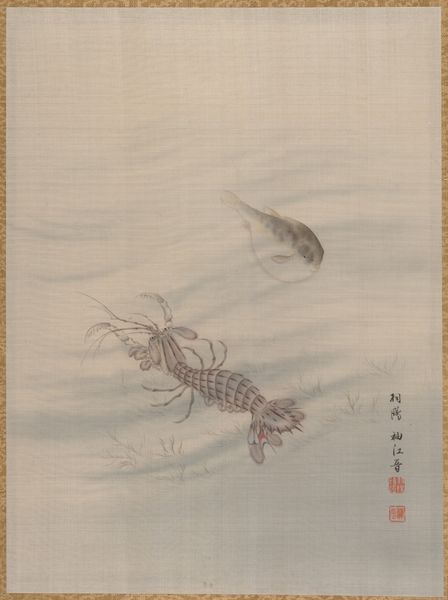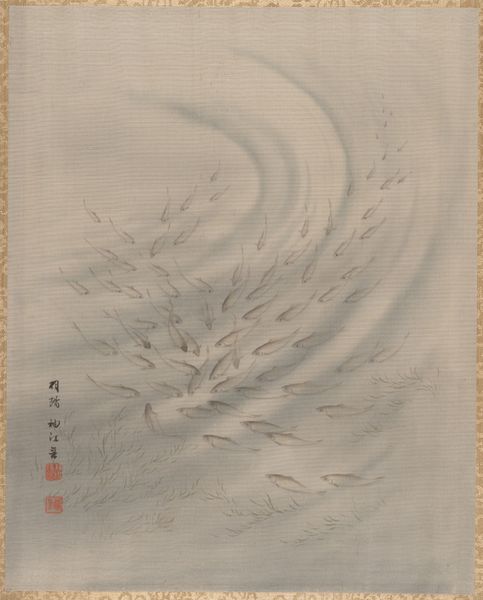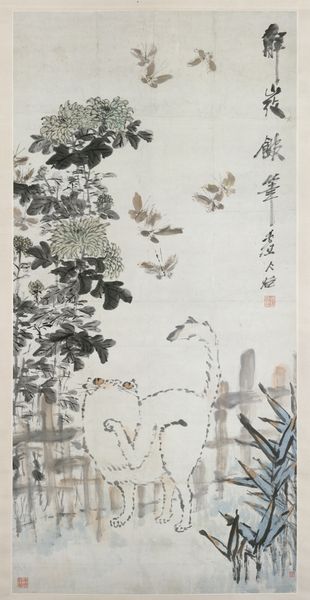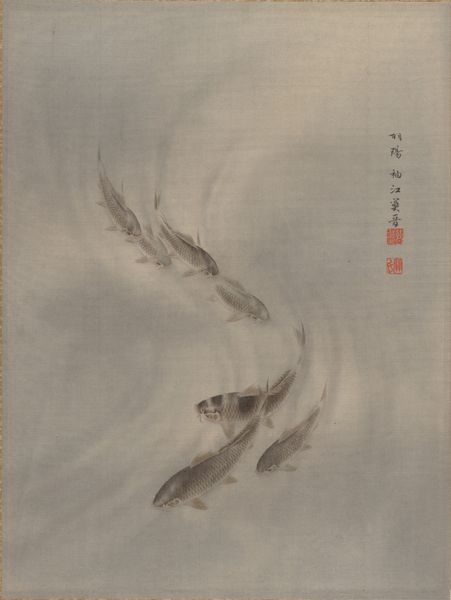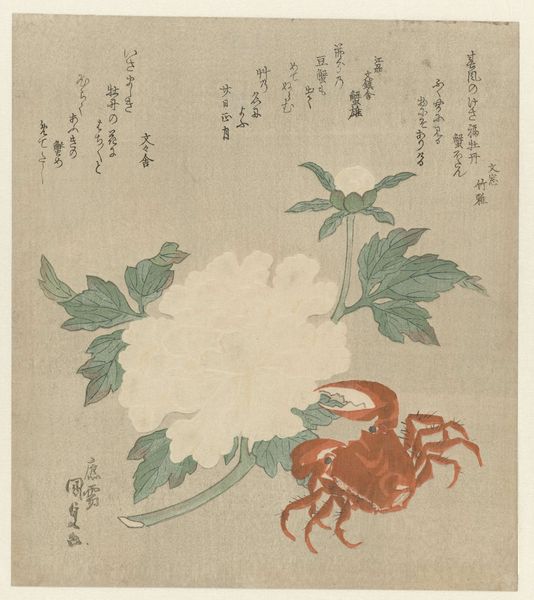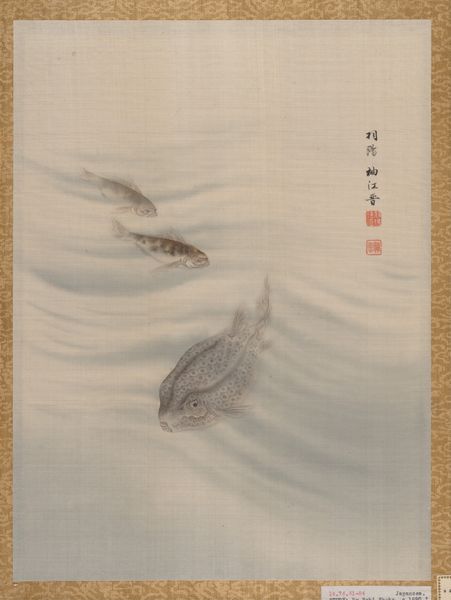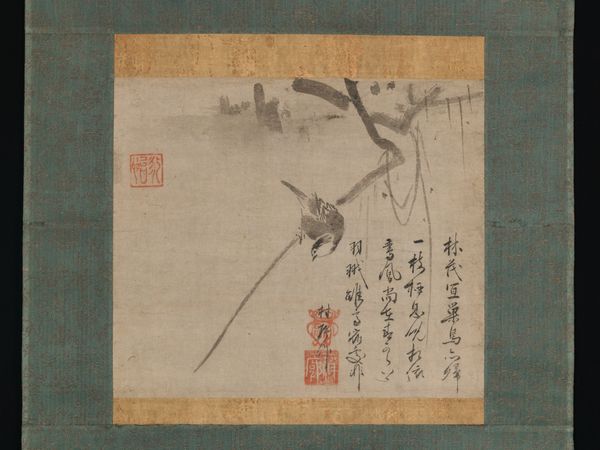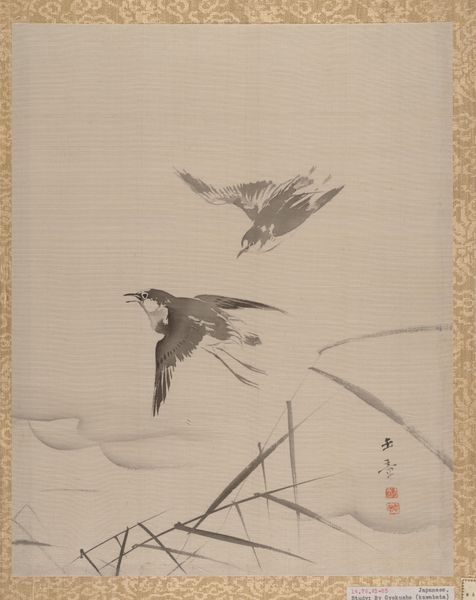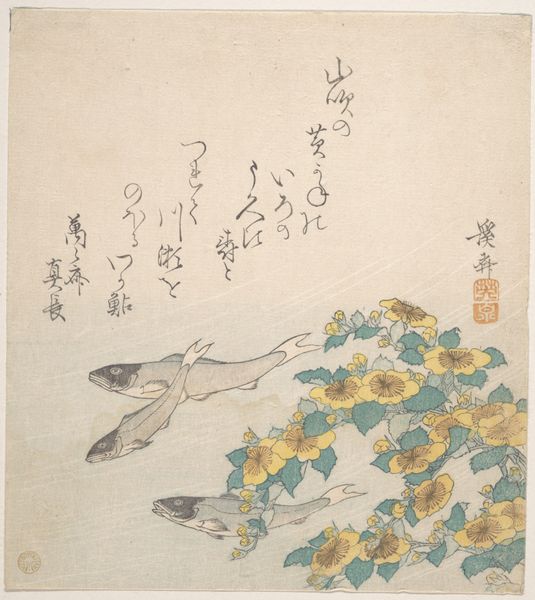
Dimensions: 13 5/8 x 10 3/4 in. (34.6 x 27.3 cm)
Copyright: Public Domain
Editor: Here we have Seki Shūkō’s "Shrimp (Ebi)", painted between 1890 and 1892 using watercolors. The muted tones and ethereal quality create a peaceful, almost dreamlike, ambiance. How do you interpret this work in light of its historical and cultural context? Curator: Well, first, it's important to consider the socio-political backdrop of the Meiji period in Japan, a time of rapid modernization and Westernization. This print utilizes traditional *ukiyo-e* aesthetics— a genre originally created to showcase the ephemeral nature of everyday pleasures. Yet its depiction of shrimp in soft, hazy watercolor points to a broader, potentially critical dialogue about Japan’s changing relationship with its natural resources and its cultural identity, a subtle form of cultural preservation in a period of mass industrialisation. Editor: That's a perspective I hadn’t considered. So you are saying that it acts as a kind of resistance to cultural change? Curator: I wouldn't frame it simply as "resistance." But it definitely reflects a negotiation. Are these shrimps purely decorative, or do they gesture to ecological concerns that the accelerated modernisation tends to disregard? What statement, then, is the artist making through this artwork? Does it align to conservation or merely appreciation? Editor: Thinking about it that way makes me see new dimensions in the artwork. Thank you. Curator: Indeed! It's when we connect the artistic expression to historical forces that art truly reveals its potency as a lens onto our shared humanity.
Comments
No comments
Be the first to comment and join the conversation on the ultimate creative platform.
